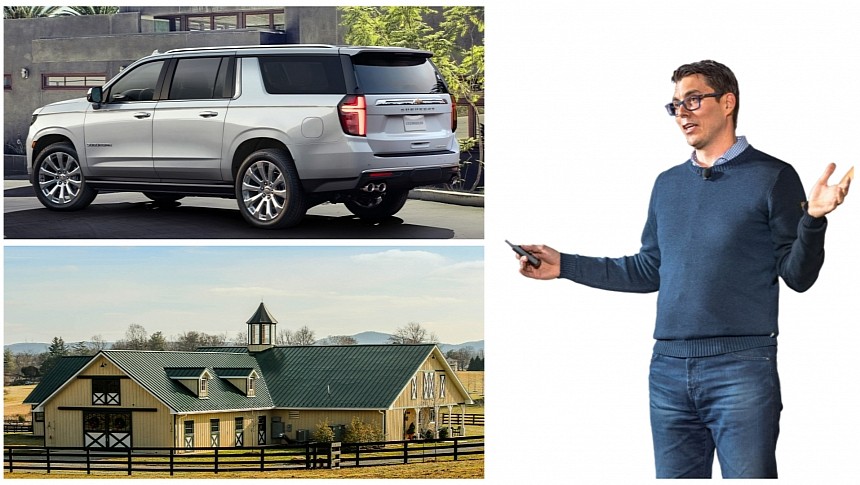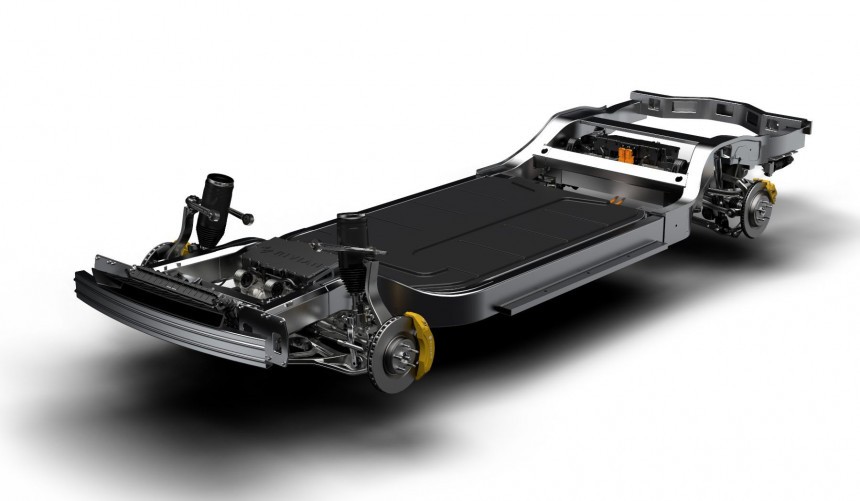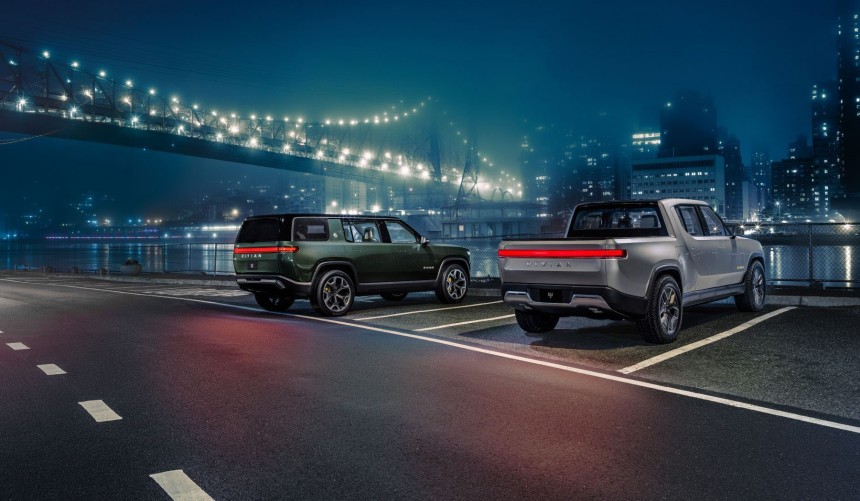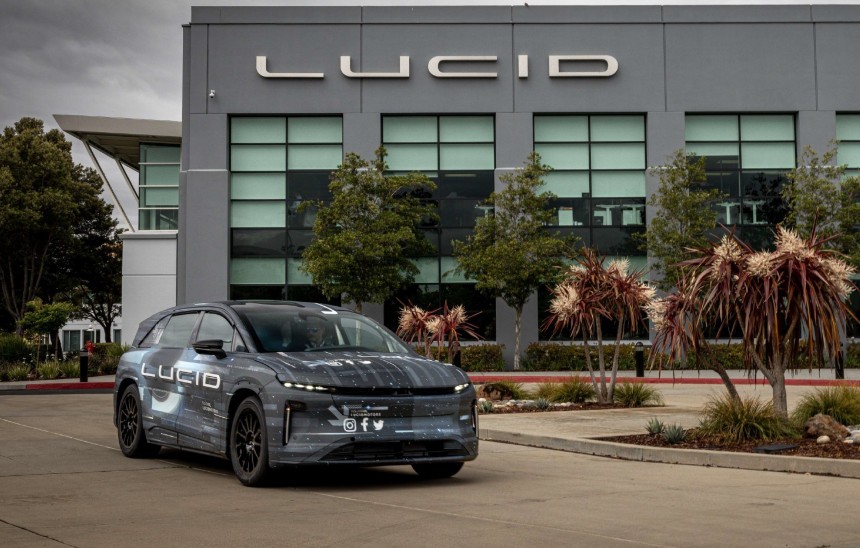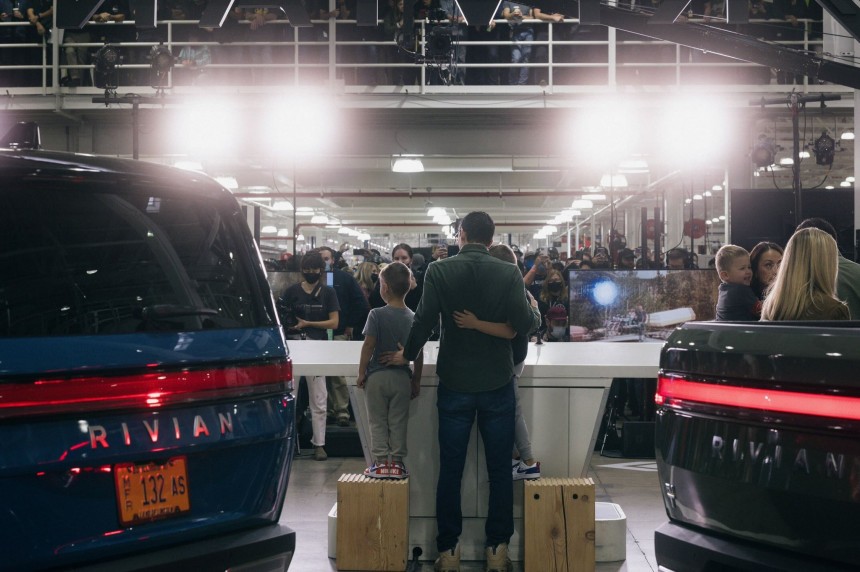You might be playing a bad hand by buying a gas-powered car in around seven years or so, believes Rivian CEO RJ Scaringe. He's not wrong. But he's not completely right either. Here's why.
We are slowly yet surely moving away from fossil fuel-hungry vehicles. This year, the world's best-selling car was battery-electric for the first time ever. The Model Y still has work to do if it wants to keep this crown until 2023 ends, but the half-year sales result proved that more and more people are ready to go on the zero-tailpipe emission route.
Add OPEC+'s shenanigans into the mix, which keep the oil price artificially high, and it's clear why the US and its allies are incentivizing everyone to manufacture electric vehicles. Be they battery-electric (BEV) or fuel-cell vehicles (FCEVs), the bottom idea is that we must gradually reduce our dependence on fossil fuels and power our mobility with electricity, which would be great to come from renewable sources.
The mandatory push for EVs gets even more important as we examine China and its dominance in the battery manufacturing sectors. Six of the top 10 companies producing high-voltage energy storage units for cars are in the Asian country. It's one of the reasons why the US subsidizes battery manufacturing stateside through federal funding.
While all this push for cleaner powertrains sounds great for local environments like cities and can help the global fight against climate change, one thing that is often overlooked is customers. If they can't justify buying these products, why is the industry in such a rush to switch from burning gas or diesel to consuming electrons?
But, alas, it's happening, and we cannot honestly disagree. The only two issues are the dates some governments have set for banning the sales of new passenger vehicles with a gas- or diesel-powered engine under their hood and that most automakers are happy to sell fewer cars at a higher price.
That former rushes things artificially and may lead to pricier vehicles and fewer jobs. On average, a fossil fuel-powered car uses 100 more parts than a BEV. That means the production process is simpler, there's no need for many people on the production line, and you don't need to have tens of suppliers working closely with you as an automaker.
The latter creates issues for adults who need to remain on the move and require at least a dependable commuting appliance that won't break the bank. Leasing or financing a car is already expensive because of inflation, but when cars have high MSRPs too… There's not much one can do.
Turning to the secondary market doesn't work because those vehicles' prices have also risen. It creates a major issue for Americans who don't have access to reliable public transport or live in communities where a grocery run means traveling at least 100 miles.
On top of all that, auto companies will be faced with the prospect of reducing their workforce, retraining those remaining, and cutting partnerships with various suppliers.
The cheapest R1T available costs $73,000, while the most budget-friendly R1S is $78,000. None of these entry-level versions are, however, in production. So, The Rivian vehicles customers can order today cost $79,000 and $84,000 respectively.
The Irvine-based auto company is currently perceived as America's next Tesla because it has launched great products and enjoys strong support from prolific businesses like Amazon. It even has the potential to become one of America's most successful auto companies.
But its CEO made a questionable statement in an interview. The executive said that people may not be inclined to buy an all-electric vehicle today because they might not find the body type that suits their mobility needs. He never thought about pricing or availability.
RJ Scaringe believes that in a decade or so, most cars will be all-electric, and the high-power charging infrastructure will also be solved. His company recently adopted Tesla's connector, even though Rivian has its own DC fast charging network in development. He's convinced that gas-powered cars will become unusable relics by 2030 and joined forces with the world's most valuable automaker to accelerate the transition.
The man pointed out that buying a full-size Chevrolet Suburban SUV in 2030 will be like "building a horse barn in 1910." The moment Scaringe refers to was when the automotive industry went through a revolution of its own. In the US, Ford led the charge. Around half a million motor vehicles were on the road 113 years ago. New automakers kept popping up from nowhere, just as we saw recently happen with brands like Rivian, Lucid, Fisker, and VinFast.
"Like, what are you going to do with that, right? In 10 years? Yeah, like gas stations will be slowly disappearing. It's just weird," said the CEO to Heatmap.
At first, RJ Scaringe may seem out of touch because his company is targeting well-off buyers who are willing to splurge on a first-generation all-electric vehicle and can comfortably deal with possible failures, lengthy repairs, or being stranded.
But the bottom line is that the executive isn't wrong. He may have forgot what some Americans are dealing with, but the world is changing regardless. Seven years from now, we might have cars with solid-state batteries roaming the streets, lower costs for Li-ion energy storage units, multiple powertrain solutions, and a competitive environment that'll force market participants to better their products and find ways to reduce manufacturing costs so they can offer consumers more accessible vehicles.
Similarly, automakers are finally taking DC fast charging seriously. They will either partner with existing providers like Tesla or create new ventures like the one just recently announced by General Motors, Stellantis, BMW, Hyundai, Kia, Honda, and Mercedes-Benz. Even Electrify America could sort out its reliability problems in seven years.
The next logical step would be expanding AC outlets in cities, towns, and villages so people can charge when they stop for a meeting or visit.
Self-driving cars also must not be disregarded. Tesla's vision-only FSD Beta, Cruise or Waymo's robotaxis, Mercedes-Benz's Drive Pilot, and Mobileye's Chauffeur might automate driving and transform how we relate to cars. They might be reduced to commuting appliances as the developed world trails toward a much less carbon-intensive economy.
Buying a gas-guzzler in 2030 won't make sense unless it's a sports car that runs on renewable fuel like the one Porsche is currently trying to make viable.
But until then, we're paying for everything. Gas cars are expensive because automakers need tons of cash to develop suitable electric vehicles, fuel costs too much because OPEC+ members want to take advantage of whatever's left before the majority switches to BEVs, and inflation is worsening everything.
It's going to be tough for a while, but today's kids might not even need a driver's license if companies like Zoox or Cruise succeed in making the person sitting behind the steering wheel irrelevant. They might learn about gas-powered vehicles from history books, see them only at the track, or get to touch them at classic car events.
Add OPEC+'s shenanigans into the mix, which keep the oil price artificially high, and it's clear why the US and its allies are incentivizing everyone to manufacture electric vehicles. Be they battery-electric (BEV) or fuel-cell vehicles (FCEVs), the bottom idea is that we must gradually reduce our dependence on fossil fuels and power our mobility with electricity, which would be great to come from renewable sources.
The mandatory push for EVs gets even more important as we examine China and its dominance in the battery manufacturing sectors. Six of the top 10 companies producing high-voltage energy storage units for cars are in the Asian country. It's one of the reasons why the US subsidizes battery manufacturing stateside through federal funding.
While all this push for cleaner powertrains sounds great for local environments like cities and can help the global fight against climate change, one thing that is often overlooked is customers. If they can't justify buying these products, why is the industry in such a rush to switch from burning gas or diesel to consuming electrons?
Don't forget the consumer
It doesn't really make sense to put such an intricate industry like the automotive one on high alert and force it to drastically change all of a sudden. Automakers are a big part of why we have all kinds of vehicles on the road today. But don't forget that suppliers, contractors, and smaller incorporated entities also exist. They employ millions worldwide, connecting engineers, designers, technicians, drivers, chemists, and many more professionals, white- and blue-collar workers.But, alas, it's happening, and we cannot honestly disagree. The only two issues are the dates some governments have set for banning the sales of new passenger vehicles with a gas- or diesel-powered engine under their hood and that most automakers are happy to sell fewer cars at a higher price.
That former rushes things artificially and may lead to pricier vehicles and fewer jobs. On average, a fossil fuel-powered car uses 100 more parts than a BEV. That means the production process is simpler, there's no need for many people on the production line, and you don't need to have tens of suppliers working closely with you as an automaker.
The latter creates issues for adults who need to remain on the move and require at least a dependable commuting appliance that won't break the bank. Leasing or financing a car is already expensive because of inflation, but when cars have high MSRPs too… There's not much one can do.
On top of all that, auto companies will be faced with the prospect of reducing their workforce, retraining those remaining, and cutting partnerships with various suppliers.
A tone-deaf CEO?
Rivian currently manufactures two all-electric vehicles aimed at all sorts of customers – the R1T pickup truck and the R1S SUV. It also makes battery-powered cargo vans aimed at commercial buyers because they come with a dedicated software suite.The cheapest R1T available costs $73,000, while the most budget-friendly R1S is $78,000. None of these entry-level versions are, however, in production. So, The Rivian vehicles customers can order today cost $79,000 and $84,000 respectively.
But its CEO made a questionable statement in an interview. The executive said that people may not be inclined to buy an all-electric vehicle today because they might not find the body type that suits their mobility needs. He never thought about pricing or availability.
RJ Scaringe believes that in a decade or so, most cars will be all-electric, and the high-power charging infrastructure will also be solved. His company recently adopted Tesla's connector, even though Rivian has its own DC fast charging network in development. He's convinced that gas-powered cars will become unusable relics by 2030 and joined forces with the world's most valuable automaker to accelerate the transition.
The man pointed out that buying a full-size Chevrolet Suburban SUV in 2030 will be like "building a horse barn in 1910." The moment Scaringe refers to was when the automotive industry went through a revolution of its own. In the US, Ford led the charge. Around half a million motor vehicles were on the road 113 years ago. New automakers kept popping up from nowhere, just as we saw recently happen with brands like Rivian, Lucid, Fisker, and VinFast.
A prediction that, unfortunately for gearheads, makes sense
But in 1913, a Ford Model T had a price tag of $525, which would amount to $16,211 in today's money. A quad-motor Rivian R1S costs $92,000 before taxes and fees. That puts it out of reach for most Americans who, on average, earn $59,000 per year in a day and age when housing (and everything else, for that matter) is expensive.At first, RJ Scaringe may seem out of touch because his company is targeting well-off buyers who are willing to splurge on a first-generation all-electric vehicle and can comfortably deal with possible failures, lengthy repairs, or being stranded.
But the bottom line is that the executive isn't wrong. He may have forgot what some Americans are dealing with, but the world is changing regardless. Seven years from now, we might have cars with solid-state batteries roaming the streets, lower costs for Li-ion energy storage units, multiple powertrain solutions, and a competitive environment that'll force market participants to better their products and find ways to reduce manufacturing costs so they can offer consumers more accessible vehicles.
The next logical step would be expanding AC outlets in cities, towns, and villages so people can charge when they stop for a meeting or visit.
Self-driving cars also must not be disregarded. Tesla's vision-only FSD Beta, Cruise or Waymo's robotaxis, Mercedes-Benz's Drive Pilot, and Mobileye's Chauffeur might automate driving and transform how we relate to cars. They might be reduced to commuting appliances as the developed world trails toward a much less carbon-intensive economy.
Buying a gas-guzzler in 2030 won't make sense unless it's a sports car that runs on renewable fuel like the one Porsche is currently trying to make viable.
But until then, we're paying for everything. Gas cars are expensive because automakers need tons of cash to develop suitable electric vehicles, fuel costs too much because OPEC+ members want to take advantage of whatever's left before the majority switches to BEVs, and inflation is worsening everything.
It's going to be tough for a while, but today's kids might not even need a driver's license if companies like Zoox or Cruise succeed in making the person sitting behind the steering wheel irrelevant. They might learn about gas-powered vehicles from history books, see them only at the track, or get to touch them at classic car events.
